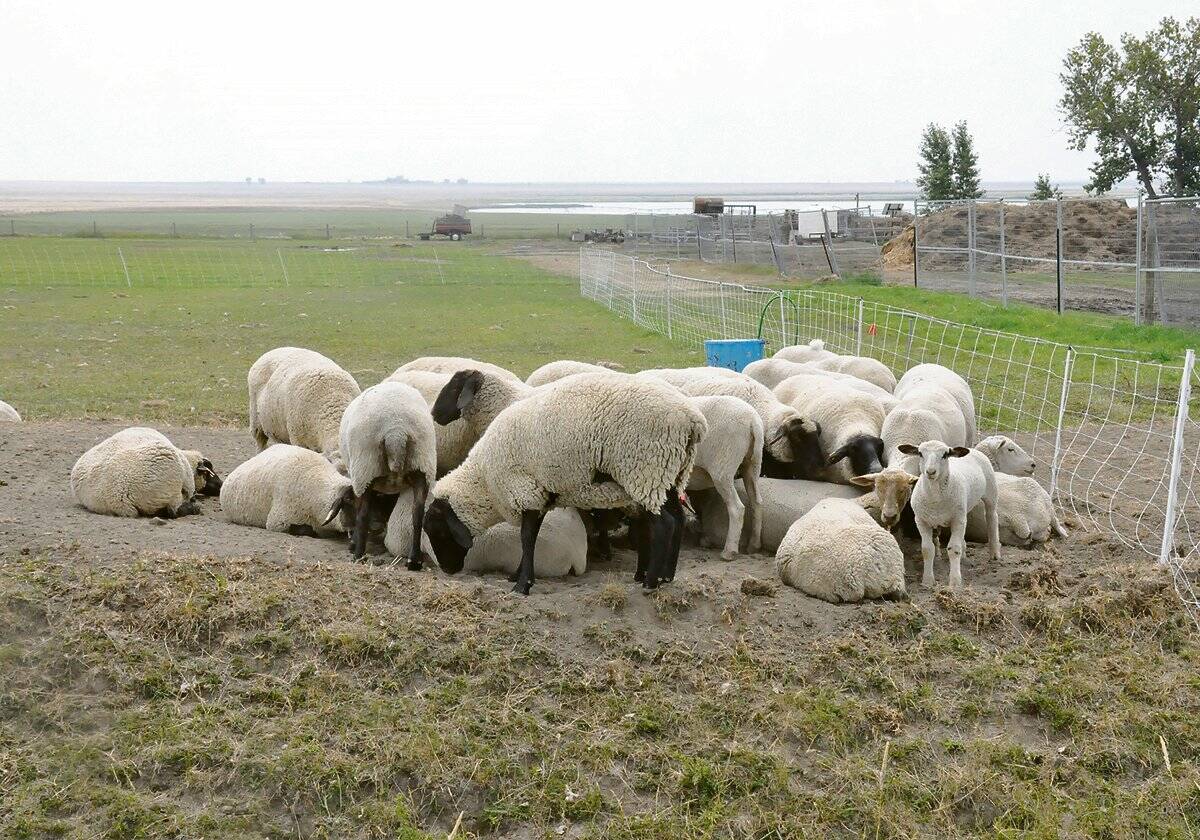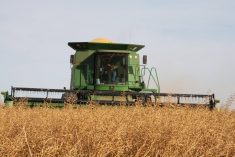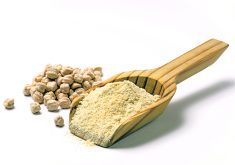Producers are always busy, so it makes sense that they want to make the most of their time and money.
As well, in today’s economic and political climate, many consumers are looking for ways to support local producers and their efforts.
Some Saskatchewan sheep producers have found ways to make the most of their efforts and take advantage of the buy local movement.
Read Also

Crop quality looks good this year across Prairies
Crop quality looks real good this year, with the exception of durum.
At the Saskatchewan Sheep Development Board Symposium earlier this year, a few producers shared how they’re adding value to their operations. They point out that sheep are an animal with many opportunities, but producers don’t always take advantage of them.
Sheep are a product themselves, but value can also be created from their wool, hide and meat.
Brian and Aimee Hunstad own Iconic Enterprises at Hanley, Sask., and raised sheep for years until selling their flock in 2020.
A few years back, they began to graze sheep at a winery for vegetation control. Not long after, Brian heard that the Canadian Forces Ammunition Depot (CFAD) near Dundurn, Sask., was looking for sheep or goats for vegetation control and fire prevention around its ammunition holdings. This has since expanded to also include targeted grazing at the BHP Jansen potash mine project in eastern Saskatchewan.
While the Hundstads no longer have their own flock, Brian rents other sheep to graze at these locations.
The venture at CFAD had started as a trial so that the depot could evaluate whether the sheep could do what was wanted of them. Brian took 100 head of sheep for five days and returned a day later to check the fences. Within that first day, the sheep had cleared the area. The major who was in charge was impressed.
“The biggest challenge (is) paperwork and regulations,” Brian said.
“Like, soon as you start going big corporations, including the Department of Defence, there’s rules (to follow).”
However, that doesn’t discount the profitability and success that Brian has had with this way of adding value to his business. The venture has been profitable, even with the costs of electric fencing and water and the time spent moving the sheep.
He said it even gives the company some “PR bonus points” because of the sustainable and environmentally friendly way of controlling weeds and vegetation instead of chemicals or additional manpower and machines.
Meanwhile, Aimee operates Count Your Sheep, which she describes as the “comfy” side of Iconic Enterprises.
She creates duvets as large as California king size, pillows from travel size to king body pillows and mattress toppers with wool.
“In the spring of 2019 … I just started thinking, we throw all this out. There’s got to be something we can do with it,” she said.
“So I started looking into making wool duvets, just for our family.”
After learning how to skirt the fleece and finding the best type of wool and material for the project, she had made nine duvets by spring 2020.
Since then, the Hunstads have expanded their operations, hiring help, learning the best way to clean wool and finding that the best fabric is 500 thread count cotton sateen.
Aimee said that once the wool is clean, there’s no lanolin, which is what causes allergies. She’s had people with wool allergies use her products with no issues.
The couple buy wool from nine other producers in Saskatchewan and are looking for more supply. One of their wool sources is Haaland Livestock, also from Hanley.
The farm is owned and operated by Chad Haaland and his family. They started with sheep in 2020, and now run 300 ewes and butcher and sell lamb.
The butchering side began when he became aware of the high quantities of lamb imported to Canada, which seemed strange to him when he knows plenty of sheep producers. He took a “why not?” approach to his business.
“Why are we importing so much lamb when we’ve got this great product? What can I do?” Haaland said.
“So I’m like, worst case scenario, I butcher a couple, and if I can’t market them, we’ll eat them. And if I can sell to some friends, neighbours, we’ll try it. What have we got to lose? I mean, we’ve always got the markets that we can sell to if we need to, but why not try it?”
So, he gave it a go. Haaland built his facility by outfitting a room in his barn using directions he found on YouTube. He set up the space, insulated it and sterilized it for butchering. He even used the video site to learn how to butcher.
He figured that if people can use YouTube to learn how to tear apart and rebuild a car, why not use it to learn how to butcher?
Haaland said he never expected to go in this direction but wanted to find a way to add value to his business as a sheep producer.
Since starting, they have used Facebook as a marketing tool and have been selling at a local store in Saskatoon, where they sold more than 100 lambs in the past year.
“There’s lots of people that are looking for lamb,” he said.
“My wife ran into somebody this morning (who said), ‘we don’t know where to get good lamb.… I want to buy home grown, Saskatchewan lamb.’ ”
According to a 2023 report from the Canadian Federation of Independent Business, when a consumer purchases from a small, local business, 66 cents of every dollar recirculates into the provincial economy. In comparison, only 11 cents per dollar recirculates provincially when buying from multinationals with physical locations, and only eight cents from online multinationals.
However, marketing has been the biggest challenge for each of these small businesses.
Aimee Hunstad talked about her challenges keeping up with social media.
It’s an essential part of a small business but it’s difficult to post regularly.
She said not having a big enough wool supply to set up an online store also hampers her marketing.
So far, they’ve attended trade shows and sell product online through the Saskatchewan Sheep Development Board’s Ewe Shop but mainly rely on word of mouth.
Haaland has also had social media issues, saying he’s been kicked out of many Saskatoon area sales groups on Facebook due to animal product guidelines and regulations that don’t allow the advertising of such products. However, he hasn’t let it discourage him.
“Just off our farm, all of our lambs are gone. I’ve been buying back lambs from people that I sold to so that I can keep filling up in my customer base,” he said.
“So the demand is out there. It’s just a matter of growing the business. So the moving target that we always seem to be having is, what do we do now?”
They’re looking into alternative marketing methods, but for a small business, a free site such as Facebook was simpler.
In their marketing plan, Haaland makes sure to play to the aspects of buying local and ethically raised meat. He shares the story of the business with customers, including that the lambs graze throughout summer and they’re well taken care of.
















